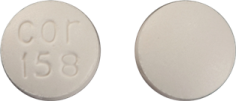Cilostazol Disease Interactions
There are 4 disease interactions with cilostazol.
Cilostazol (applies to cilostazol) bleeding
Major Potential Hazard, Moderate plausibility. Applicable conditions: Coagulation Defect
Cilostazol inhibits platelet aggregation in a reversible manner. Cilostazol has not been studied in patients with hemostatic disorders or active pathologic bleeding. Avoid use of cilostazol tablets in these patients.
Cilostazol (applies to cilostazol) heart failure
Major Potential Hazard, Moderate plausibility. Applicable conditions: Congestive Heart Failure
The use of cilostazol is contraindicated in patients with heart failure of any severity. Cilostazol and several of its metabolites are inhibitors of phosphodiesterase III. Several drugs with this pharmacologic effect have caused decreased survival compared to placebo in patients with class III- IV heart failure.
Cilostazol (applies to cilostazol) hepatic impairment
Moderate Potential Hazard, Moderate plausibility. Applicable conditions: Liver Disease
No cilostazol dose adjustment is required in patients with mild hepatic impairment. Patients with moderate or severe hepatic impairment have not been studied in clinical trials and dosing recommendations cannot be provided. Caution is advised if used in these patients.
Cilostazol (applies to cilostazol) ischemic heart disease
Moderate Potential Hazard, Moderate plausibility.
Cilostazol may induce tachycardia, palpitation, tachyarrhythmia or hypotension. The increase in heart rate associated with cilostazol is approximately 5 to 7 bpm. Patients with a history of ischemic heart disease may be at risk for exacerbations of angina pectoris or myocardial infarction. Caution is advised.
Switch to professional interaction data
Cilostazol drug interactions
There are 473 drug interactions with cilostazol.
Cilostazol alcohol/food interactions
There is 1 alcohol/food interaction with cilostazol.
More about cilostazol
- cilostazol consumer information
- Check interactions
- Compare alternatives
- Pricing & coupons
- Reviews (18)
- Drug images
- Side effects
- Dosage information
- During pregnancy
- Drug class: miscellaneous cardiovascular agents
- Breastfeeding
- En español
Related treatment guides
Drug Interaction Classification
| Highly clinically significant. Avoid combinations; the risk of the interaction outweighs the benefit. | |
| Moderately clinically significant. Usually avoid combinations; use it only under special circumstances. | |
| Minimally clinically significant. Minimize risk; assess risk and consider an alternative drug, take steps to circumvent the interaction risk and/or institute a monitoring plan. | |
| No interaction information available. |
See also:
Further information
Always consult your healthcare provider to ensure the information displayed on this page applies to your personal circumstances.


